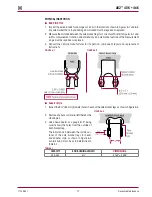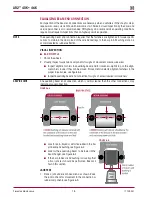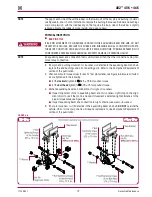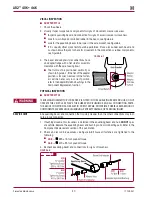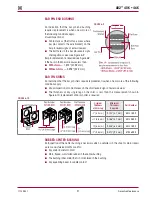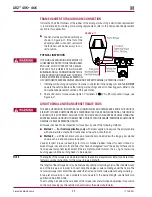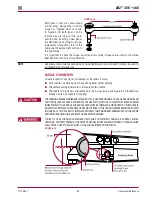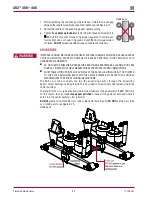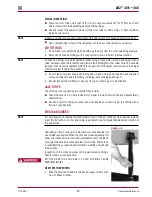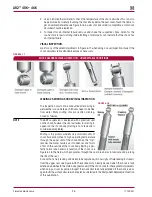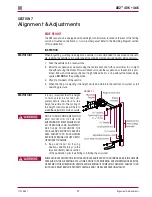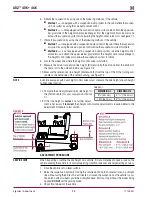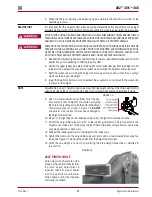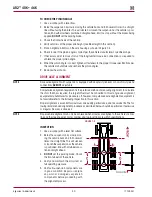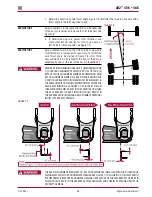
Preventive Maintenance
18
17730-241
AR2
™
40K • 46K
EquALIzINg BEAM ENd CONNECTION
An inspection of the beam end connections are necessary when a vehicle is in the shop for major
repair work or every six months, whichever comes first . Periodic visual inspection by the driver and
service personnel is also recommended . Off-highway and severe service operating conditions
require more frequent inspections than on-highway service operation .
NOTE
The equalizing beam end connection requires that the fasteners are tightened to torque specifi-
cations to maintain the clamp load of the axle bracket legs to the bar pin . All bushing motion is
accommodated by rubber deflection .
VISuAL INSpECTION
■
BAR pIN STYLE
1 . Chock the wheels .
2 . Visually inspect suspension components for signs of movement or excessive wear .
■
Inspect alignment shims in equalizing beam end for looseness . Lightly tap on the align-
ment shims to see if they can be moved . If movement is detected, tighten fasteners to the
proper torque value, see Figure 6-6
■
Inspect equalizing beam end connection for signs of excessive wear or looseness
SERVICE HINT
An equalizing beam end connection, which is visibly cleaner than the other connections, may
indicate a loose connection .
FIguRE 6‑4
FIguRE 6‑5
■
Look for worn, frayed or distorted rubber in the bar
pin beam end bushing, see Figure 6-4
■
Look for the equalizing beam to be lower in the
beam hanger, see Figure 6-4
■
If the bar pin beam end bushing is visually offset
a floor jack test should be performed . See jack
Test in this section
jACK TEST
1 . Place a jack under each beam end as shown . Raise
the jack to check for movement in the connection or
rubber components, see Figure 6-5 .














